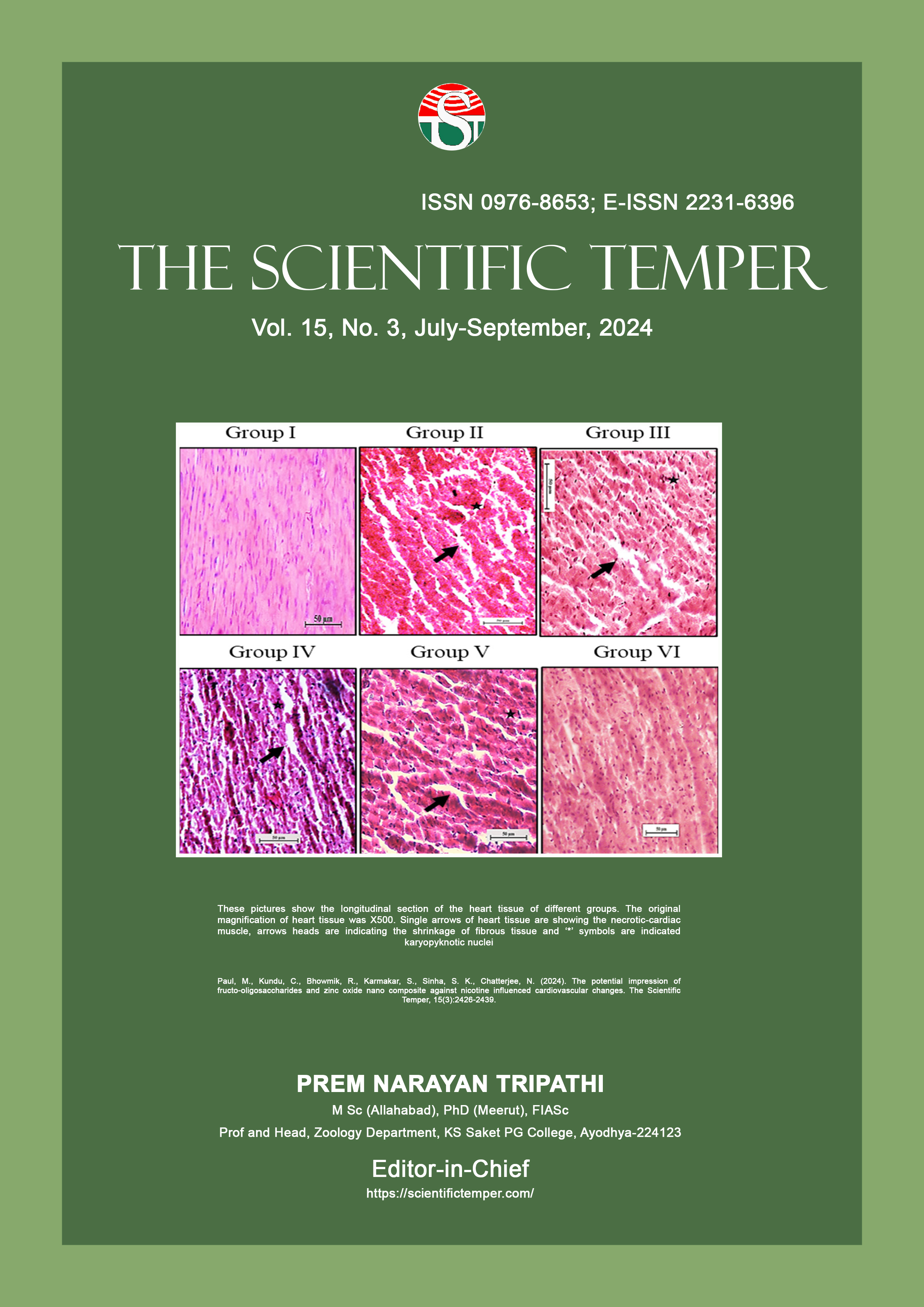A novel approach using type-II fuzzy differential evolution is proposed for identifying and diagnosis of diabetes using semantic ontology
Downloads
Published
DOI:
https://doi.org/10.58414/SCIENTIFICTEMPER.2024.15.3.64Keywords:
Diabetes detection, Type 2 fuzzy logic, differential evolution, semantic ontologyDimensions Badge
Issue
Section
License
Copyright (c) 2024 The Scientific Temper

This work is licensed under a Creative Commons Attribution-NonCommercial-ShareAlike 4.0 International License.
With prestigious recognition of diabetes and appraisal it is very essential in healthcare domain for treatment effectiveness and control. Conventional techniques typically rely on arduous and error-prone manual scrutiny of medical records and symptoms. To overcome those challenges, this research proposes a Type II Fuzzy Differential Evolution based Semantic Ontology (T2FDESO) methodology to assist in the identification and diagnosis of diabetes. The T2FDESO techniques which combines the current state of art advantages like fuzzy logic, differential evolution concept for semantic ontology helps in improving the efficiency and accuracy research. The method uses Type 2 fuzzy logic to model the inaccuracies and imprecision’s in medical data, delivering a reliable decision support. Applying the differential evolution method increased further improve precision and sensitivity of diabetes diagnosis model. All medical knowledge is codified using a uniform semantic ontology and relations among different terms that occur in a statement are explicitly represented by the T2FDESO method. The algorithm is capable of deducing these other characteristics related to diabetes well because those are the primary symptoms for which we provided. The integration of domain-specific information is facilitated by its ability to improve the diagnostic process. Additionally, apart from the increased sensitivity and specificity of diagnosis for diabetes which was faster while using T2FDESO method has several other advantages. This system takes advantage of a semantic ontology, which permits sharing expert knowledge across different domains in an integrative manner that keeps the diagnostic process updated with new information and advances on diabetes research, while merging both biological and clinical aspects. Furthermore, the T2FDESO technique well combines various data types such as clinical records and laboratory test outcomes making a comprehensive investigation of patient information. The system can support the collection and organization of domain-specific information in a tree-like structure that assists with clinical decision-making, leading to better patient outcomes. The empirical results on a real-life dataset substantiate the efficacy of T2FDESO over existing approaches, having an immense significance in joint detection and diagnosis of diabetes for medical application. The ability to aid decision-making and timely therapy management could make a large difference in the capacity of healthcare providers offer personalized quality care for subjects with diabetes.Abstract
How to Cite
Downloads
Similar Articles
- Rekha R., P. Meenakshi Sundaram, Trust aware clustering approach for the detection of malicious nodes in the WSN , The Scientific Temper: Vol. 15 No. spl-1 (2024): The Scientific Temper
- D. Padma Prabha, C. Victoria Priscilla, A combined framework based on LSTM autoencoder and XGBoost with adaptive threshold classification for credit card fraud detection , The Scientific Temper: Vol. 15 No. 02 (2024): The Scientific Temper
- G. Hemamalini, V. Maniraj, Enhanced otpmization based support vector machine classification approach for the detection of knee arthritis , The Scientific Temper: Vol. 15 No. spl-1 (2024): The Scientific Temper
- M. Monika, J. Merline Vinotha, A resilient supply chain model integrating demand variability and carbon emissions in imperfect production systems , The Scientific Temper: Vol. 16 No. 08 (2025): The Scientific Temper
- N. Saranya, M. Kalpana Devi, A. Mythili, Summia P. H, Data science and machine learning methods for detecting credit card fraud , The Scientific Temper: Vol. 14 No. 03 (2023): The Scientific Temper
- Balaji V, Purnendu Bikash Acharjee, Muniyandy Elangovan, Gauri Kalnoor, Ravi Rastogi, Vishnu Patidar, Developing a semantic framework for categorizing IoT agriculture sensor data: A machine learning and web semantics approach , The Scientific Temper: Vol. 14 No. 04 (2023): The Scientific Temper
- S. Hemalatha, N. Vanjulavalli, K. Sujith, R. Surendiran, Effective gorilla troops optimization-based hierarchical clustering with HOP field neural network for intrusion detection , The Scientific Temper: Vol. 15 No. spl-1 (2024): The Scientific Temper
- Deepa Ramachandran VR VR, Kamalraj N, Hybrid deep segmentation architecture using dual attention U-Net and Mask-RCNN for accurate detection of pests, diseases, and weeds in crops , The Scientific Temper: Vol. 16 No. 07 (2025): The Scientific Temper
- S. Hemalatha, N. Vanjulavalli, K. Sujith, R. Surendiran, Chaotic-based optimization, based feature selection with shallow neural network technique for effective identification of intrusion detection , The Scientific Temper: Vol. 15 No. spl-1 (2024): The Scientific Temper
- U. Johns Praveena, J. Merline Vinotha, The multi-objective solid transshipment problem with preservation technology under fuzzy environment , The Scientific Temper: Vol. 16 No. 01 (2025): The Scientific Temper
<< < 1 2 3 4 5 6 7 8 9 10 > >>
You may also start an advanced similarity search for this article.
Most read articles by the same author(s)
- T. Ramyaveni, V. Maniraj, Hyperparameter tuning of diabetes prediction using machine learning algorithm with pelican optimization algorithm , The Scientific Temper: Vol. 15 No. 03 (2024): The Scientific Temper
- V. Manikandabalaji, R. Sivakumar, V. Maniraj, A framework for diabetes diagnosis based on type-2 fuzzy semantic ontology approach , The Scientific Temper: Vol. 15 No. 03 (2024): The Scientific Temper
- R. Sivakumar, S. Vijaya, Eco-epidemiology of prey and competitive predator species in the SEI model , The Scientific Temper: Vol. 15 No. spl-2 (2024): The Scientific Temper
- G. Hemamalini, V. Maniraj, Enhanced otpmization based support vector machine classification approach for the detection of knee arthritis , The Scientific Temper: Vol. 15 No. spl-1 (2024): The Scientific Temper



